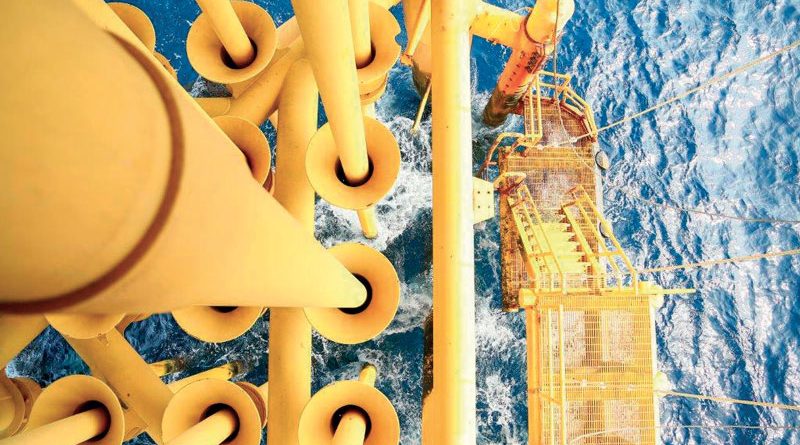Valves for Oil & Gas, Italy at the Forefront
Italy confirms its position as the European reference point for industrial valves and flow control solutions in the oil & gas sector. A highly digitalized and innovative field with a combined value of 3.3bn, employing 11.000 people across the country with the heart of production in Bergamo and the Lombardy region. No coincidence then, that on May 22nd and 23rd the third edition of IVS – Industrial Valve Summit, will be held in Bergamo with over 10.000 visitors expected.
by Leonardo Albino
The Italian industrial valve and flow control sectors are ready for the most eagerly awaited moment of the year, the third edition of IVS – Industrial Valve Summit, to be held in Bergamo on May 22nd and 23rd. An event than in itself grows year on year, evidence of a sector in blooming health and one that is ready to confront the technological and environmental challenges of the future.
Promoted by the Bergamo industrial association and the Ente Fiera Promoberg trade fair promotion body, the third edition of IVS will welcome 250 companies spread over two pavilions across 13.000 sqm of display space. Over 10.000 visitors are expected this year, around 30% up on last year’s figure of 8.000.
A field worth €3.3bn with over 11.000 employees
For the Italian economy, the oil & gas valve market enjoys, in terms of overall value, greater importance than in any other mature market in Europe, superior to that of Germany, France and the UK. The most recent data shows revenues of around €3.3bn. 11.000 people are employed in Italy across over 300 companies.
Looking at total European production, Italy is the reference point – representing 31% of total production. Germany is second with 26%, the UK, 13% and France, 11%.
The role of the city of Bergamo – home to this year’s Industrial Valve Summit – could hardly be more central: over 90% of Italian industrial valve and flow control solutions for oil & gas is located within 100km of the city. Companies in this sector are real front row players in terms of national manufacturing thanks to the high level of added value of the products and the great investment made in R&D.
“With the Industrial Valve Summit, Bergamo will be the world capital of industrial valves for two days. The ever growing number of companies on show together with professional visitors creates a real virtuous circle helping to multiply commercial, touristic and, of course, industrial turnover”, said Luigi Trigona, General secretary of the Ente Fiera Promoberg trade fair promoter.
“A fair created by companies for companies, an expression of those companies themselves”, was how Giovanna Ricuperati, vice-president of the Bergamo industrial association described IVS. “IVS enhances the industrial excellence of our area, one that is able to compete globally in the oil & gas field”.
The value of the oil & gas sector is now over €200bn
Looking globally, this market immediately shows its weight. 2017 saw revenues of over €230bn, leading to €30bn of taxation revenues with consumption of 1.178 Mtep (tonnes of oil).
In the same year, domestic gas demand in Italy stood at 75.2 bn m3, 93% of which was imported and the rest coming from domestic production. Of this, 60% came from extraction of natural gas and 40% from oil refining.
Still in 2017, gas made up 36.2% of energy demand in Italy and future forecasts indicate further growth across its applications.
Moving onto oil, 2017 saw 11 refineries operating in Italy with a total capacity of
87.2 mn tonnes, total exports of crude oil, semi-worked and oil based products came in at 32 mn tonnes (source: Ministry for Industrial Development). Oil will play just as important part in future business as gas, especially in the transport sector even though there will be significant steps toward a more ecologically minded approach, thanks, in part, to synergies that will be created.
Hot topics in an increasingly digitalized sector
What will major development trends look like in oil & gas? According to a study from Minsait consultants, involving 263 managers from the sector, Internet of Things and the cloud will remain the “hot topics” over the years to come with focus being placed on technological research, innovation and sustainability. The need to respect increasingly stringent environmental laws will mean oil & gas will have to modify its business accordingly. This may include creating partnerships which can aid supply chain logistics, trading and payment flows. The digital transformation is making itself heard in this, as in every other technological sector, more and more. In fact, this will be the main driver for growth, improved efficiency and security. Many players are now on a cloud-based platform for data analysis and storage. This is helped through the growing use of applications for data analysis and artificial intelligence for the management of strategic decisions. Another imperative is in the area of physical digital assets. The emergence of the so called “digital twin” which guides the development of innovative solutions for critical asset management from both the top and bottom of the value chain. This goes from concepts like surface visualization to the perforation of surfaces, all the way to rust control of piping and so on. Augmented reality or virtual reality technology will be keys to this scenario. Other trends on everyone’s lips right now concern IoT adoption and edge computing in production, and storage and analysis of sensor led production data. Optimization in oil & gas production will depend, as much as any other industrial sector, on production data analysis.

